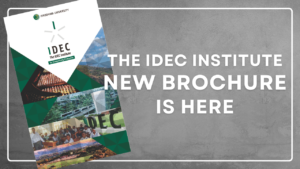By Hiroshima University Department of Public Relations
What does healthy aging look like? For answers, Hiroshima University environmental health expert Dr. Saori Kashima taps into a new science dedicated to Earth’s longevity.

Dr. Saori Kashima serves as the director of Hiroshima University’s Center for the Planetary Health and Innovation Science (PHIS),
newly established in 2022. (Hiroshima University)
Days before the G7 Hiroshima Summit in May, scholars delivered a call to act on the planet’s health to the Hiroshima Peace Memorial Park, a monument to atomic weapons’ apocalyptic threat that shook Albert Einstein to utter in 1946 his oft-quoted plea for humanity’s survival:
“… a new type of thinking is essential if mankind is to survive and move toward higher levels.”
Seventy-seven years since, as human activity ushered a breach in seven of the eight boundaries ensuring Earth’s safety, scholars are making a similar appeal.
“We are now facing a ‘Great Transition’ in tackling various global issues, such as climate change, biodiversity loss, environmental pollution, and conflicts. Educational and academic institutes are required to take on the challenge of new scientific approaches that go beyond existing ordinary thinking,” they said in the Hiroshima Planetary Health Declaration 2023.
Nine years ago, the new science of planetary health was birthed to do just that — take on the old “othering” view of nature and start seeing our interconnectedness from a new lens of transdisciplinarity. This field unites researchers and practitioners across disciplines into becoming front-liners working to nurse the planet back to health, and in turn, improve ours.
And on the front lines of this growing field in Japan is Dr. Saori Kashima, an environmental health expert and director of the Center for the Planetary Health and Innovation Science (PHIS) at Hiroshima University’s IDEC Institute.
“Many factors are intertwined and connected. I think that people have to recognize this connection more. This does not occur only within one country but across borders. Our daily life is connected to people’s lives in African countries and other areas,” Kashima, who worked with the health ministries in Senegal and Madagascar as a Japan International Cooperation Agency volunteer and expert, said.
“For tackling climate change, the current reductionist or siloed approaches are not providing enough solutions.”
Life span and health span gap
Data shows that the number of countries where a fifth of the population is over 70 years old continues to grow. And Japan’s “super-aging” society ranks as the oldest in the world with one in three people being elderly.
Although our average life span has extended by nearly three decades, rising to 73 years of age in 2020 compared to 47 in 1950, our health span, which refers to the number of years we can expect to live in reasonably good health, has lagged.
Environmental pollution and climate change-fueled extreme weather are known to unequally disadvantage the vulnerable population, which includes those in old age. And this is a problem Kashima understands well.
Last year, she co-authored a study on the impacts of the 2018 Japan flood, the country’s second-largest water-related disaster. Their findings showed how calamities are a potential risk factor for dementia in the elderly. In another study, she and her co-researchers found that natural disasters increase the likelihood of nursing home admissions and urged policymakers to prepare for this emerging risk factor.

Dr. Kashima with her students (Hiroshima University)
Looking forward to healthy aging
Now, Kashima is taking on the task of discovering what healthy aging looks like and driving the national and local actions needed to achieve it. Her new undertaking aligns with the United Nations Decade of Healthy Ageing, a global collaboration lasting until 2030 that aims to better the lives of older people, their families, and their communities. And she is turning to planetary health science for guidance.
She and her PHIS colleagues from the fields of science, engineering, and agriculture, among others, are working with community and government partners in developing the Planetary Healthy Aging Index (PHAI). It will serve as a community-oriented index to measure, monitor, and evaluate progress in attaining healthy aging for us and the planet.
“Japan’s traditional culture is nature worship such as ‘satochi,’ ‘satoyama,’ and ‘satoumi.’ Recognizing these traditions passed down to children and grandchildren is also one of the practical approaches to planetary health,” Kashima said.
Satochi, satoyama, and satoumi are portmanteaus that pair the Japanese words for earth (chi), mountain (yama), and sea (umi) with village (sato). These are spaces embodying the harmonious co-existence of human societies and nature.
“We hope that while developing the PHAI with the community, existing solutions like this will be reaffirmed. Such local solutions exist not only in Japan but also in other countries and regions.”
Kashima hopes for countries to adopt an index like PHAI that incorporates the planet’s health into its agenda.
“Even if we develop local policies and actions considering human health, without the health of the planet, it is hopeless to achieve ‘healthy aging’ in the future,” she said. “People need a fundamental shift, a ‘Great Transition,’ in how we live on Earth.”
Media Contact
Inquiries on the study
Saori Kashima
Director, Center for the Planetary Health and Innovation Science, Hiroshima University The IDEC Institute
E-mail: kashima*hiroshima-u.ac.jp
(Note: Please replace * with @)
Inquiries on the story
Hiroshima University Public Relations Office
E-mail: koho * office.hiroshima-u.ac.jp
(Note: Please replace * with @)
Link: https://www.hiroshima-u.ac.jp/en/news/78149
Date : 2023/07/27






